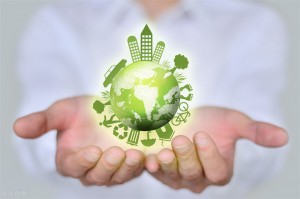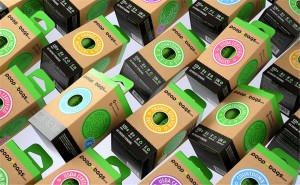Since the advent of plastic, it has been widely used in all aspects of people’s lives, bringing great convenience to people’s production and life. However, while it is convenient, its usage and waste also lead to increasingly serious environmental pollution, including white pollution such as rivers, farmland, and oceans.
Polyethylene (PE) is a widely used traditional plastic and a major alternative to biodegradable materials.
PE has good crystallinity, water vapor barrier properties and weather resistance, and these properties can be collectively referred to as “PE characteristics”.
In the process of seeking to solve the “plastic pollution” from the root, in addition to finding new environmentally friendly alternative materials, a very important method is to find an environment in the existing materials that can be degraded by the environment and become a part of the production cycle Friendly materials, which not only saves a lot of manpower and material costs, but also solves the current serious environmental pollution problem in a short time.
The properties of biodegradable materials meet the requirements of use during the storage period, and after use, they can be degraded into substances that are harmless to the environment under natural conditions.
Different biodegradable materials have different characteristics and have their own advantages and disadvantages. Among them, PLA and PBAT have a relatively high degree of industrialization, and their production capacity occupies an important position in the market. Under the promotion of the plastic restriction order, the biodegradable material industry is very hot, and major plastic companies have expanded their production. At present, the global annual production capacity of PLA is more than 400,000 tons, and it is expected to exceed 3 million tons in the next three years. To a certain extent, this shows that PLA and PBAT materials are biodegradable materials with relatively high recognition in the market.
PBS in biodegradable materials is also a material with relatively high degree of recognition, more use, and more mature technology.
The existing production capacity and the expected increase in future production capacity of degradable materials such as PHA, PPC, PGA, PCL, etc. will be small, and they are mostly used in industrial fields. The main reason is that these biodegradable materials are still in the early stage, the technology is immature and the cost is too high, so the recognition degree is not high, and it is currently unable to compete with PLA and PBAT.
Different biodegradable materials have different characteristics and have their own advantages and disadvantages. Although they do not fully have the “PE characteristics”, in fact, the common biodegradable materials are basically aliphatic polyesters, such as PLA and PBS, which contain esters. Bonded PE, the ester bond in its molecular chain gives it biodegradability, and the aliphatic chain gives it “PE characteristics”.
The melting point and mechanical properties, heat resistance, degradation rate, and cost of PBAT and PBS can basically cover the application of PE in the disposable product industry.
The degree of industrialization of PLA and PBAT is relatively high, and it is also the direction of vigorous development in my country. PLA and PBAT have different characteristics. PLA is a hard plastic, and PBAT is a soft plastic. PLA with poor blown film processability is mostly blended with PBAT with good toughness, which can improve the processability of blown film without damaging its biological properties. degradability. Therefore, it is no exaggeration to say that PLA and PBAT have become the mainstream of degradable materials.
Post time: Jan-14-2022







